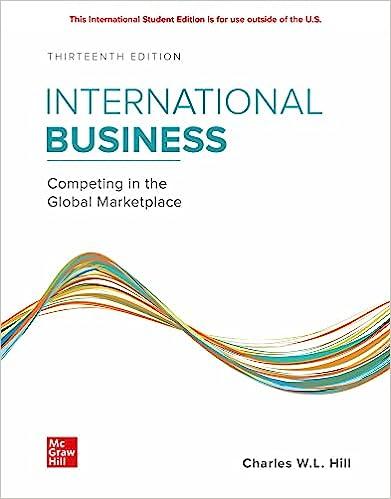Boeing and Airbus are the dominant players in the global market for large commercial jet aircraft of
Question:
In September 2016, the WTO issued another ruling criticizing the Europeans for failing to comply with its 2010 ruling and, moreover, for giving another $5 billion to Airbus in the form of noncommercial loans to help develop its latest aircraft, the A350. In this latest ruling, the WTO stated that “it is apparent that the A350 could not have been launched and brought to market in the absence of launch aid.”3 In total, the WTO calculated that Boeing had lost 104 wide-bodied jet orders and 271 narrow-bodied jet orders as a result of Airbus launch subsidies. This latest ruling opens the door for the United States to apply retaliatory trade sanctions against noncompliant European governments.
However, it seems unlikely that the United States will apply retaliatory sanctions any time soon. Part of the reason is the the United States itself has been countersued by the EU through the WTO for providing illegal subsidies to Boeing.
In November 2016, the WTO ruled that Boeing would receive around $5.7 billion in illegal tax breaks from Washington State, where Boeing’s main production facilities are located. The state of Washington had promised to give Boeing these tax breaks between 2020 and 2040 on the condition that the company kept the production of the wings for the widebodied 777X aircraft in the state. According to Airbus, these tax breaks give the 777X an unfair advantage against its rival aircraft, an assessment that the WTO seems to agree with.
Questions
1. Are there circumstances under which the subsidies that Airbus received in its early years might be justified?
2. Do you think that Boeing benefited from subsidies when it developed the 707 back in the 1960s? If they did, could they be justified?
3. Boeing and Airbus have allegedly been receiving subsidies for decades. How might these ongoing subsidies distort the market for large commercial jet aircraft?
4. Who benefits from government subsidies to Boeing and Airbus? Who loses?
5. Under what circumstances, if any, should national governments subsidize the development of new technology?
6. What would be the optimal outcome (in terms of global economic welfare) of the ongoing trade dispute between the EU and the U.S. over subsidies in the market for large commercial jet aircraft? How might such an agreement be enforced?
Step by Step Answer:

ISE International Business Competing In The Global Marketplace
ISBN: 9781260575866
13th International Edition
Authors: Charles Hill





